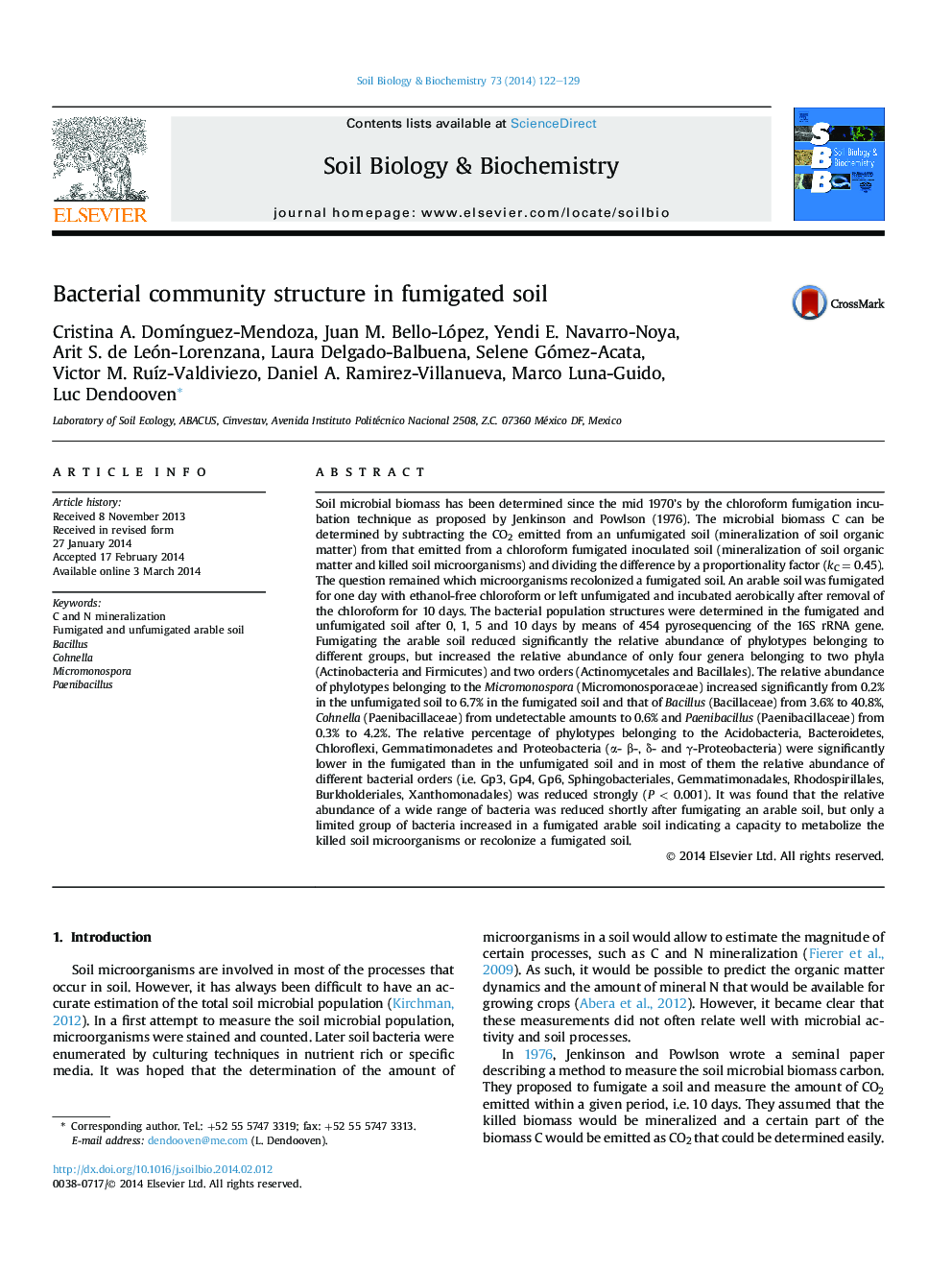| Article ID | Journal | Published Year | Pages | File Type |
|---|---|---|---|---|
| 2024668 | Soil Biology and Biochemistry | 2014 | 8 Pages |
•Soil was fumigated or left unfumigated and incubated aerobically for 10 days.•Bacterial community was determined in the fumigated and unfumigated soil.•Fumigation reduced the relative abundance of a wide range of bacteria.•It increased the relative abundance of only four genera belonging to two phyla.•The relative abundance of Bacillus increased from 3.60% to 40.80% in fumigated soil.
Soil microbial biomass has been determined since the mid 1970's by the chloroform fumigation incubation technique as proposed by Jenkinson and Powlson (1976). The microbial biomass C can be determined by subtracting the CO2 emitted from an unfumigated soil (mineralization of soil organic matter) from that emitted from a chloroform fumigated inoculated soil (mineralization of soil organic matter and killed soil microorganisms) and dividing the difference by a proportionality factor (kC = 0.45). The question remained which microorganisms recolonized a fumigated soil. An arable soil was fumigated for one day with ethanol-free chloroform or left unfumigated and incubated aerobically after removal of the chloroform for 10 days. The bacterial population structures were determined in the fumigated and unfumigated soil after 0, 1, 5 and 10 days by means of 454 pyrosequencing of the 16S rRNA gene. Fumigating the arable soil reduced significantly the relative abundance of phylotypes belonging to different groups, but increased the relative abundance of only four genera belonging to two phyla (Actinobacteria and Firmicutes) and two orders (Actinomycetales and Bacillales). The relative abundance of phylotypes belonging to the Micromonospora (Micromonosporaceae) increased significantly from 0.2% in the unfumigated soil to 6.7% in the fumigated soil and that of Bacillus (Bacillaceae) from 3.6% to 40.8%, Cohnella (Paenibacillaceae) from undetectable amounts to 0.6% and Paenibacillus (Paenibacillaceae) from 0.3% to 4.2%. The relative percentage of phylotypes belonging to the Acidobacteria, Bacteroidetes, Chloroflexi, Gemmatimonadetes and Proteobacteria (α- β-, δ- and γ-Proteobacteria) were significantly lower in the fumigated than in the unfumigated soil and in most of them the relative abundance of different bacterial orders (i.e. Gp3, Gp4, Gp6, Sphingobacteriales, Gemmatimonadales, Rhodospirillales, Burkholderiales, Xanthomonadales) was reduced strongly (P < 0.001). It was found that the relative abundance of a wide range of bacteria was reduced shortly after fumigating an arable soil, but only a limited group of bacteria increased in a fumigated arable soil indicating a capacity to metabolize the killed soil microorganisms or recolonize a fumigated soil.
